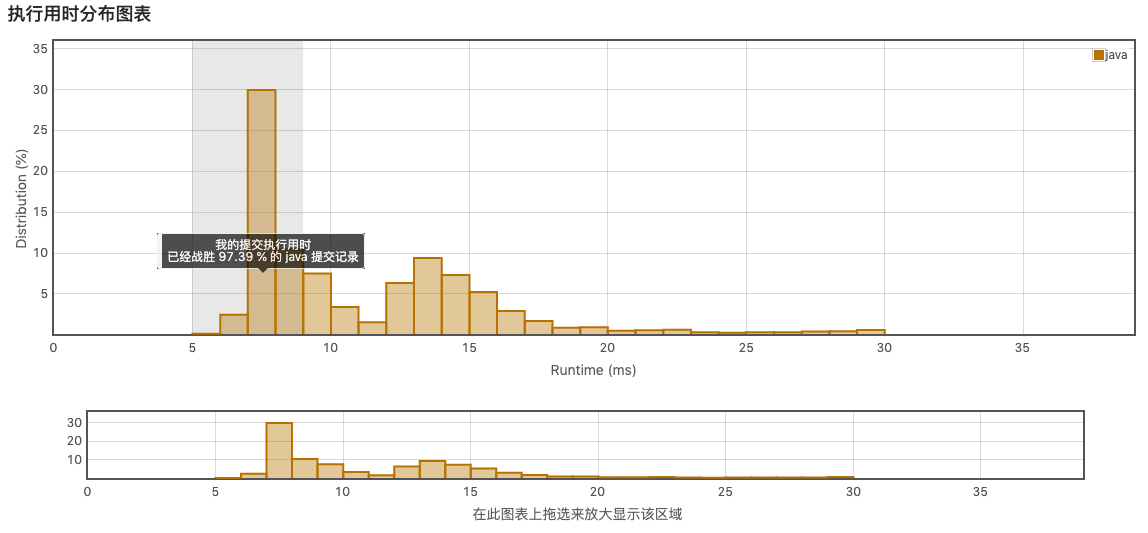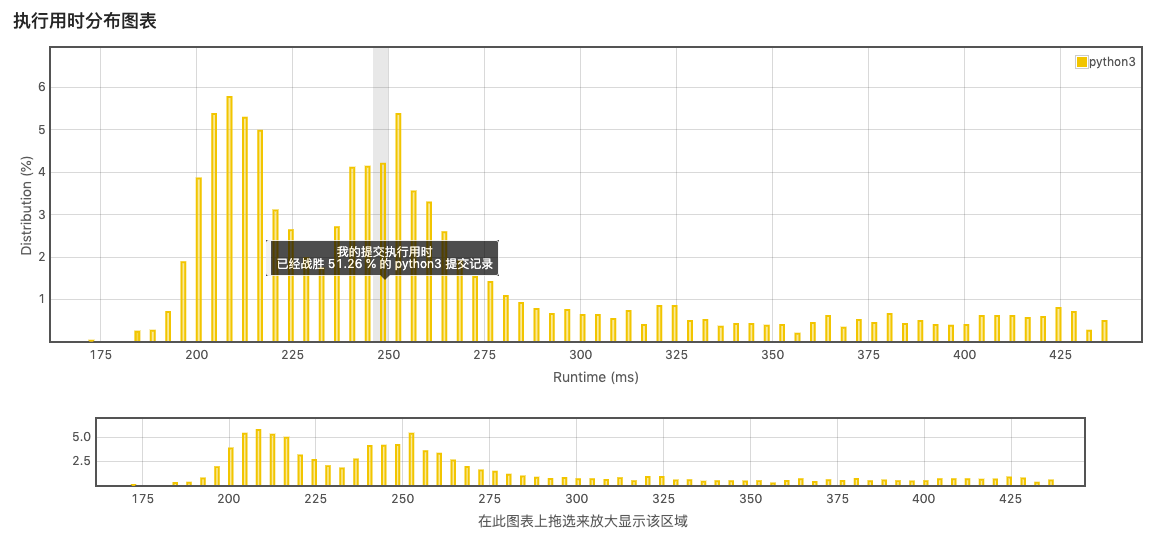编写一个高效的算法来搜索 m x n 矩阵 matrix 中的一个目标值 target。该矩阵具有以下特性:
-
-
- 每行的元素从左到右升序排列。
- 每列的元素从上到下升序排列。
-
示例:
现有矩阵 matrix 如下:
[ [1, 4, 7, 11, 15], [2, 5, 8, 12, 19], [3, 6, 9, 16, 22], [10, 13, 14, 17, 24], [18, 21, 23, 26, 30] ]
给定 target = 5,返回 true。
给定 target = 20,返回 false。
思路:
这道题本质上就是遍历二维数组,我们可以直接遍历,但是由于数组中的数据是存在规律的(下大于上、右大于左),所以我们可以根据其规律,对其进行类似于“剪枝”的操作。
这里我们是从左下角开始遍历的,即示例中的18。这样遍历的好处是,比18大的元素,都在其右侧,比18小的元素,都在其上方。
如果从1开始遍历,无论是下方元素,还是右侧元素,都是大于1的。需要额外进行比较(比较下方和右侧元素和target的大小)。
java
class Solution { public boolean searchMatrix(int[][] matrix, int target) { // check if (matrix == null || matrix.length == 0) { return false; } if (matrix[0] == null || matrix[0].length == 0) { return false; } // 确定边界 int bottom = matrix.length - 1; int right = matrix[0].length - 1; // 确定起点 int i = bottom, j = 0; while (i >= 0 && j <= right) { if (matrix[i][j] > target) { i--; } else if (matrix[i][j] < target) { j++; } else { return true; } } return false; } }
结果:

python3:
class Solution: def searchMatrix(self, matrix, target): # check if not matrix and len(matrix) == 0: return False if not matrix[0] and len(matrix[0]) == 0: return False # 确定边界 bottom, right = len(matrix) - 1, len(matrix[0]) - 1 i, j = bottom, 0 while i >= 0 and j <= right: if matrix[i][j] > target: i -= 1 elif matrix[i][j] < target: j += 1 else: return True return False
结果:
